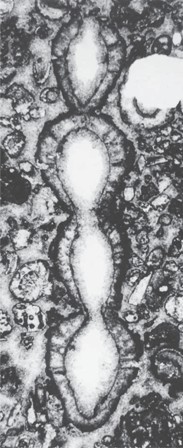History of investigations of fossil algae in Croatia
Main Article Content
Abstract
Investigations of fossil algae in Croatia began in 1907 with the very first description of the Permian dasyclad Mizzia velebitana from Mt. Velebit by Austrian geologist Richard Schubert. This was followed by Julius Pia’s investigations (1920, 1925), on material given to him by Schubert. The first Croatian researcher on fossil algae was Milan Herak, Pia’s PhD student, with his first paper on Ladinian dasyclads published in 1950. He cooperated with a colleague from the Faculty of Science, Vanda Kochansky-Devidé, who published her first papers together with Herak on Permian and Carboniferous dasyclads in 1959 and 1960. While Herak focused on Triassic algae, Kochansky-Devidé investigated mostly Upper Palaeozoic algae and fusulinid foraminifera. Ivan Guši? comes from the same faculty, and his first paper was published in 1966. Mom?ilo Milanovi?, from the Institute of Geology (the present day Croatian Geological Survey), published his first paper in 1962, focusing mainly on Permian algae. The most prolific researcher Branko Soka? also came from the Institute of Geology; his first papers dated from 1964, and he is still an active researcher. Over time, papers originating from the “Zagreb Algological School” become distinguished by rich and well illustrated fossil material, making numerous contributions to the better understanding of fossil benthic algae from younger Palaeozoic and Mesozoic strata. This was possible not only because of the diligence of the authors, but was also the result of the very thick and well exposed carbonate sequence of the Croatian Dinarides Mts. Rajka Radoi?i? from Beograd (Serbia) also described some taxa from Croatia. Almost all the research refers to dasycladal algae, while other algae are only rarely investigated. Complete references to all papers are given.
Downloads
Article Details
Authors have copyright and publishing rights on all published manuscripts.

